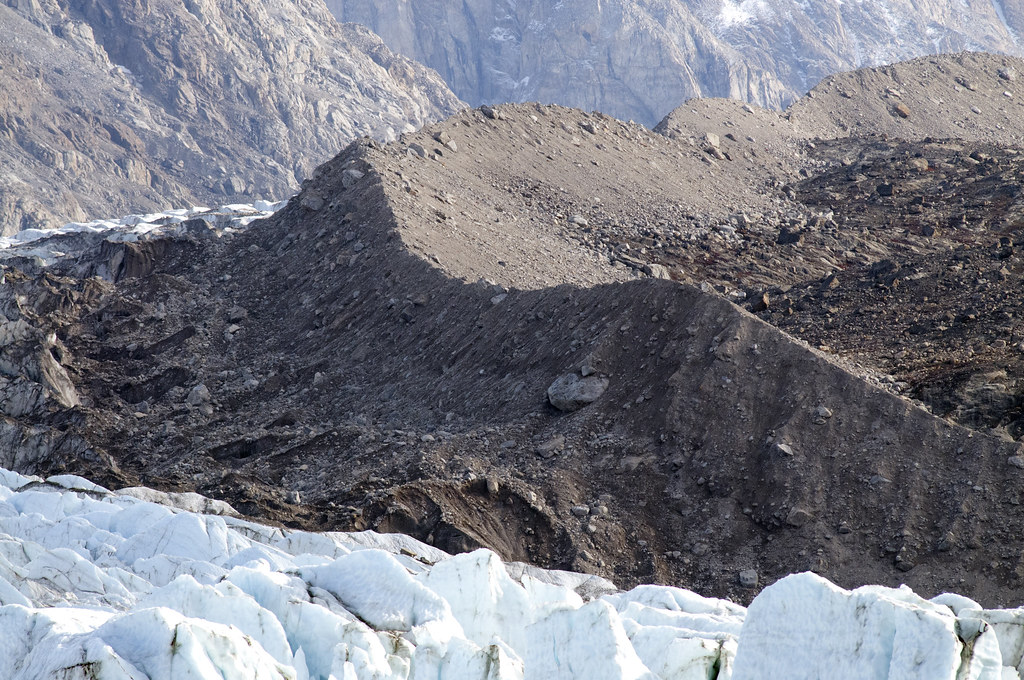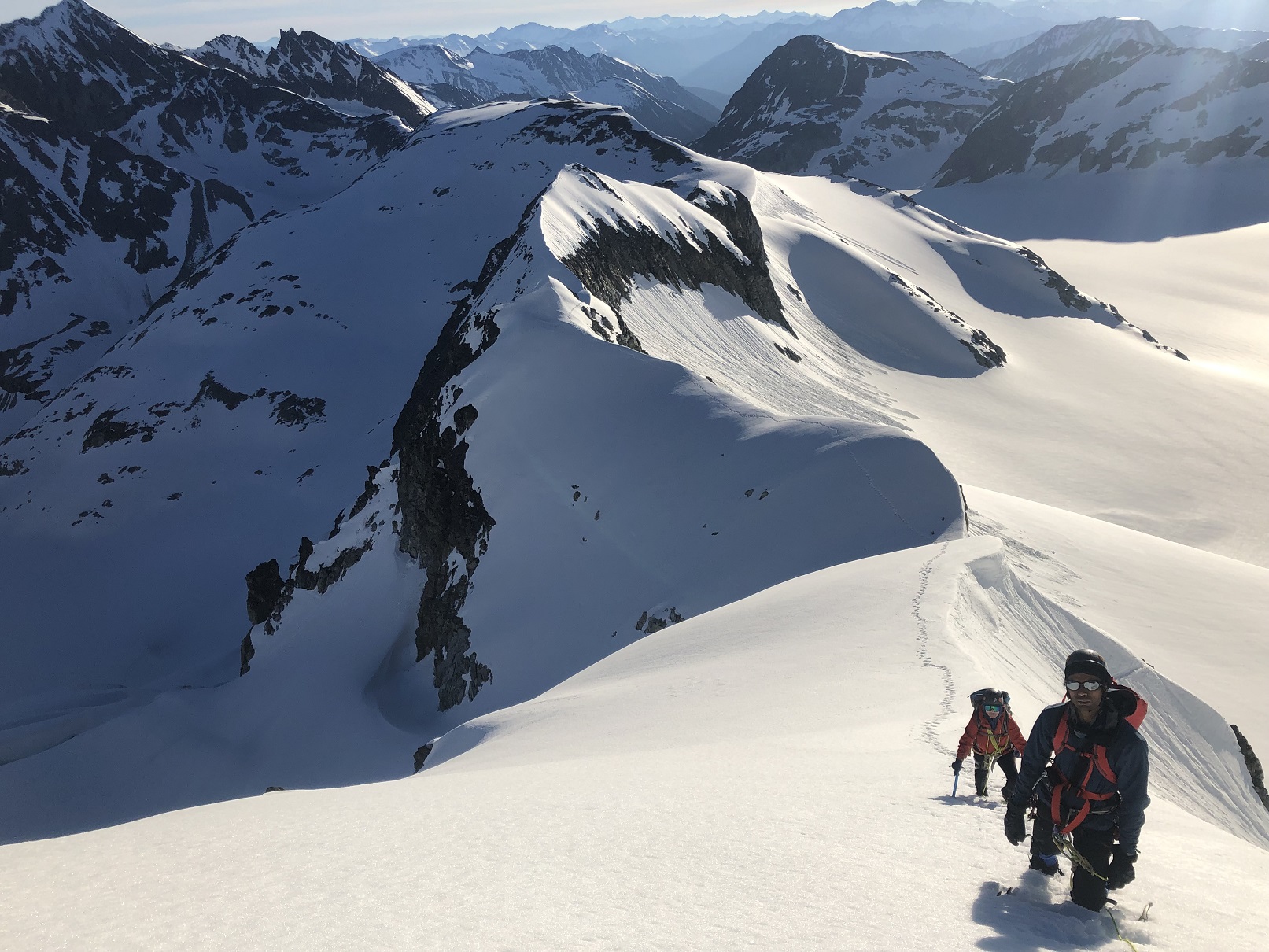A ____________ _______________ is typically found in mountainous areas, and flows downhill to lower elevations
Valley glacier
True or False: Polished bedrock, striated bedrock, and pitted/plucked surfaces are all evidence of glacial erosion
True
______________ _______________ refers to the surface of coarse, tightly-packed grains and bedrock that are left behind after wind has eroded away looser sediment
Desert pavement
When a large chunk of ice breaks off a glacier and drifts into the sea, it is now known as an...
BONUS: Approximately how much of the abovementioned ice chunk is concealed underwater?
Iceberg
BONUS: 80-85%
Large ridges of sediment left behind by glaciers

Moraines
An _____________ _______________ is a glacier that forms over a broad, relatively flat area of land
BONUS: Give the name of one continent that is covered in this type of glacier
Ice sheet
BONUS: Antarctica/Greenland
The rock and mineral particles carried at the base of a glacier are known as _________________
Tools
List 3 factors that can affect the ability of wind to erode sediment
1. Size of sediment
2. Presence of water in sediment
3. Presence of plant cover
Which two environments are most susceptible to wind erosion?
Deserts and coasts
Bowl-shaped landforms carved into the side of mountains by glaciers
Cirques
Draw a diagram of a glacier, labeling the zone of ablation, zone of accumulation, and snowline
BONUS: If the snowline is retreating to higher elevations, it means the glacier is...
BONUS: Shrinking
The term for glacial erosion caused by the debris carried within the glacier is known as __________________
BONUS: True or False: There is a different name for erosion caused by wind-borne debris
Abrasion
BONUS: False
Briefly explain or draw how sand dunes are formed
BONUS: Approximately only 30% of deserts are composed primarily of sand dunes, and these seas of sand are called...
Sand dunes are formed when sand is deposited behind an obstacle like a bush or a rock. The sand builds up on the windward side of the obstacle and rolls down the leeward side, forming a wave-like structure.
BONUS: Ergs
Glaciers that flow primarily due to internal deformation are known as _____________-______________ glaciers, while glaciers that flow primarily by basal slip are known as ______________-___________ glaciers.
BONUS: Which of the abovementioned glaciers flows faster?
Cold-based; warm-based
BONUS: Warm-based
Formed by back-to-back cirques on either side of a drainage divide, making a knife-edged ridge

Arete
Briefly explain or draw how snow can transform into glacial ice over time.
Fresh snow adds pressure to underlying snow, eventually reducing the size of snow crystals and pushing out air pockets until a solid layer of ice is formed.
A. How would sea-level change if the ice sheets on Antarctica and Greenland were to continue to melt?
B. How would sea-level change if glaciers were to dramatically expand, such as during an ice age?
BONUS: True or False -- during the Pleistocene ice age, vast areas of coast were exposed, allowing for humans to cross between continents that are now separated by water
A. Sea level would rise (poor Florida)
B. Sea level would fall and large areas of coast would be exposed
BONUS: True
Briefly and generally explain how landforms like those shown below are formed:
Wind differentially erodes away softer strata (layers) of rock, leaving behind the stronger layers
Briefly explain the mechanism by which the following lakes were formed:
Glaciers moving across the landscape carved deep striations in the ground, which filled with water, forming lakes.
Formed by several back-to-back cirques on all sides of a mountain peak

Horn
Draw or briefly explain why glaciers can flow like liquids, despite being composed of solid ice. Your drawing or explanation should describe what is happening to the glacial ice on a molecular level.
Glaciers are under extreme pressure, especially at their bases, causing bonds between molecules to bend, and causing molecules to move closer together, both of which cause the glacial ice to behave like a liquid.
A: What happens to the coastline of a continent that is covered in large masses of ice?
B. What would occur to this coastline if the ice were removed? At that general rate would this take place?
A: For continents covered in sheets of ice, such as Antarctica or Greenland, the coastline sinks several meters below sea level
B. If the ice were removed, the coastline would experience post-glacial rebound, in which it may rise to several meters above sea level. However, this process is extremely slow (may take millions of years to occur)
Draw or describe the three ways that wind can move sediment
1. Suspension: Wind carrying the smallest and lightest particles
2. Saltation: Wind bouncing medium-sized particles along the ground
3. Surface creep: Largest particles moving slowly along ground due to numerous and constant collisions with smaller particles
What are two practices that farmers can implement to help prevent wind erosion?
BONUS: List one possible consequence of letting wind erosion occur unchecked
1. Terracing/contouring, irrigation, crop rotation, planting shelter belts
BONUS: Dust Bowl conditions, loss of topsoil, dust storms
Deep valleys leading into the ocean, carved by glaciers moving across a landscape

Fjord